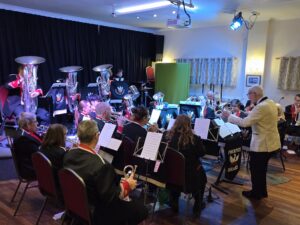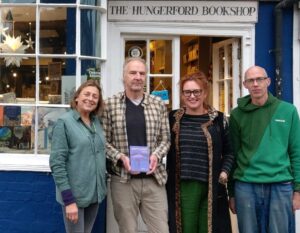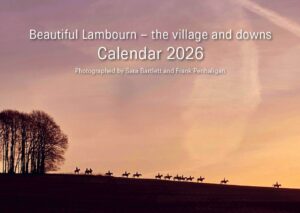Rewild and the birds will come!
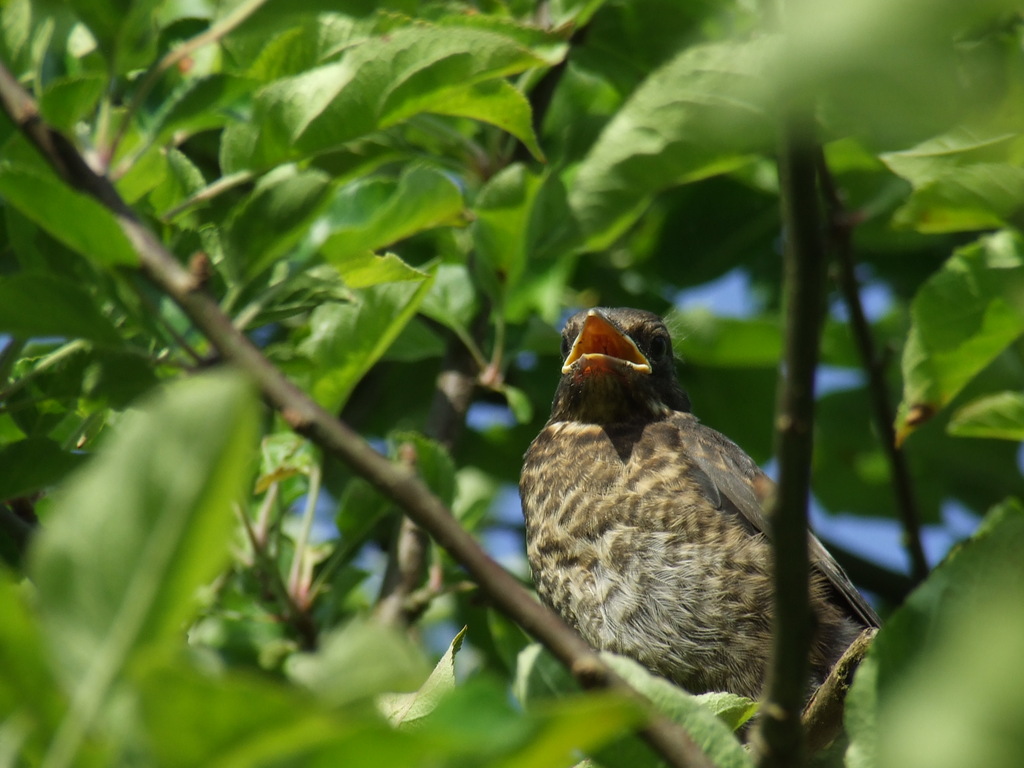
An article by Ruth and Adrian Neil
The Lambourn Environmental Group – August 2021
When we moved to the centre of Lambourn 30 years ago our quarter acre back garden was bounded by wooden fences on all 3 sides. With a young dawn redwood tree and two apple trees at the far end.
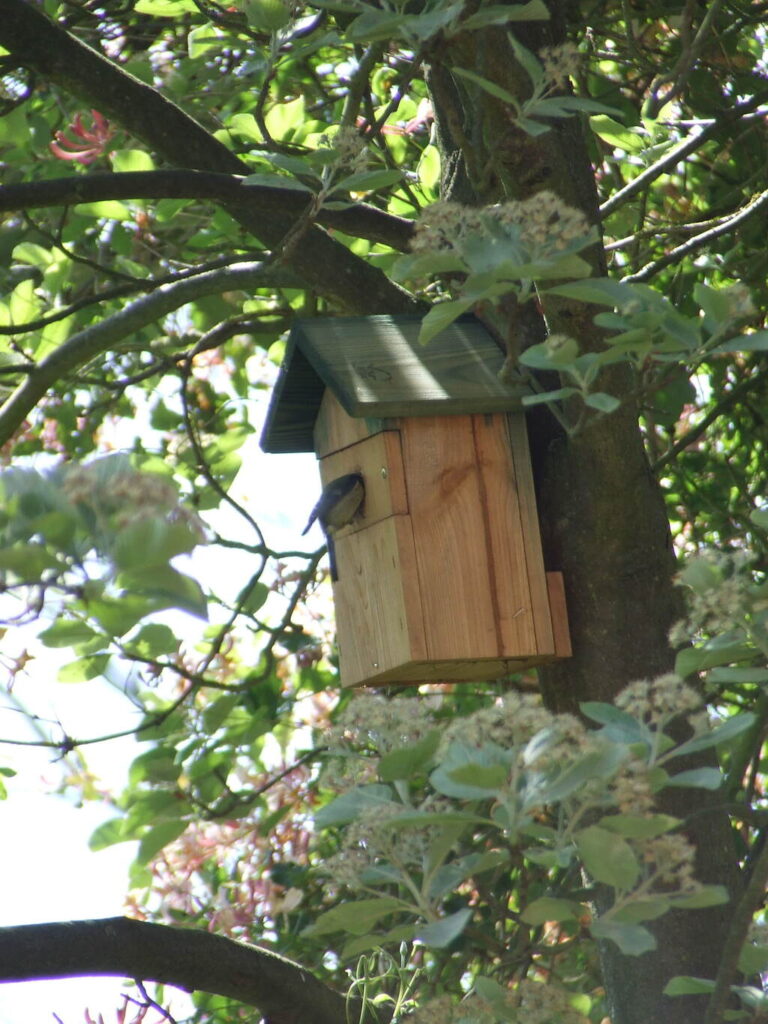
It was a sterile rectangle of lawn, of little interest to any but the most common birds and with few safe nesting sites, if any.
After a few years the buddleia, whitebeam, lilac and beautybush in our three ornamental borders matured. We saw more robins, house sparrows, blackbirds, occasional starlings, blue tits, feral pigeons, and jackdaws than before. The usual suspects.
We started by providing hanging bird feeders. Goldfinches, greenfinches, coal tits, great tits and blackcaps arrived. Sometimes a siskin or brambling. Ground feeding in an RSPB feeder brought more of the birds we originally saw, as well as chaffinches, rooks and magpies. We provide water too, most important in the dry summer months.
We let the ivy on the fence at the far end grow. By ten years or so it had covered the fence entirely, and started climbing up the remaining apple tree and a young ash tree that self-seeded. We left it alone.
Wrens appeared, long-tailed tits, great spotted woodpeckers and an occasional garden warbler. We have seen the fledgelings of the first three, along with those of the robins, blackbirds and starlings, proving that safe nesting sites are now nearby.
After 30 years the larch lap panels in the ivy are only now needing to be replaced. That’s a typical lifespan for them anyway. We aim to replace them whilst disturbing the ivy as little as possible.
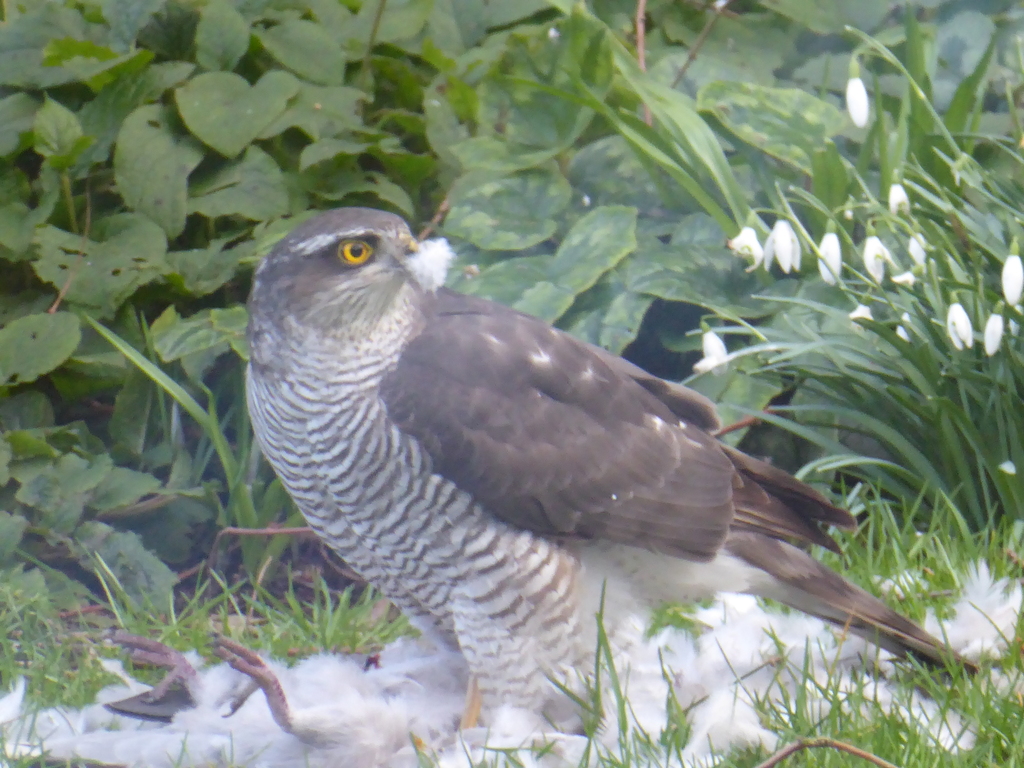
On two memorable occasions a bullfinch and a goldcrest appeared. We have also had the excitement of sparrow hawks taking the odd bird and feeding on our lawn. In recent years two pairs of mallards drop in regularly in spring and clear out the ground feeder.
Any fine dead pieces of dawn redwood were collected and heaped into two piles at the base of the fence covered in ivy. Thus, creating a haven for insects and beetle larvae and an additional food supply.
Dunnocks came. They and the wrens enjoy foraging in the woodpiles, which also afford security from predators and less competition for the ground food we scatter there.
We always heard a song thrush in the top of a nearby Scots Pine and this year one is regularly ground feeding. We put food in the woodpiles for the thrush as well, as the blackbirds bully it out of the feeder on the lawn.
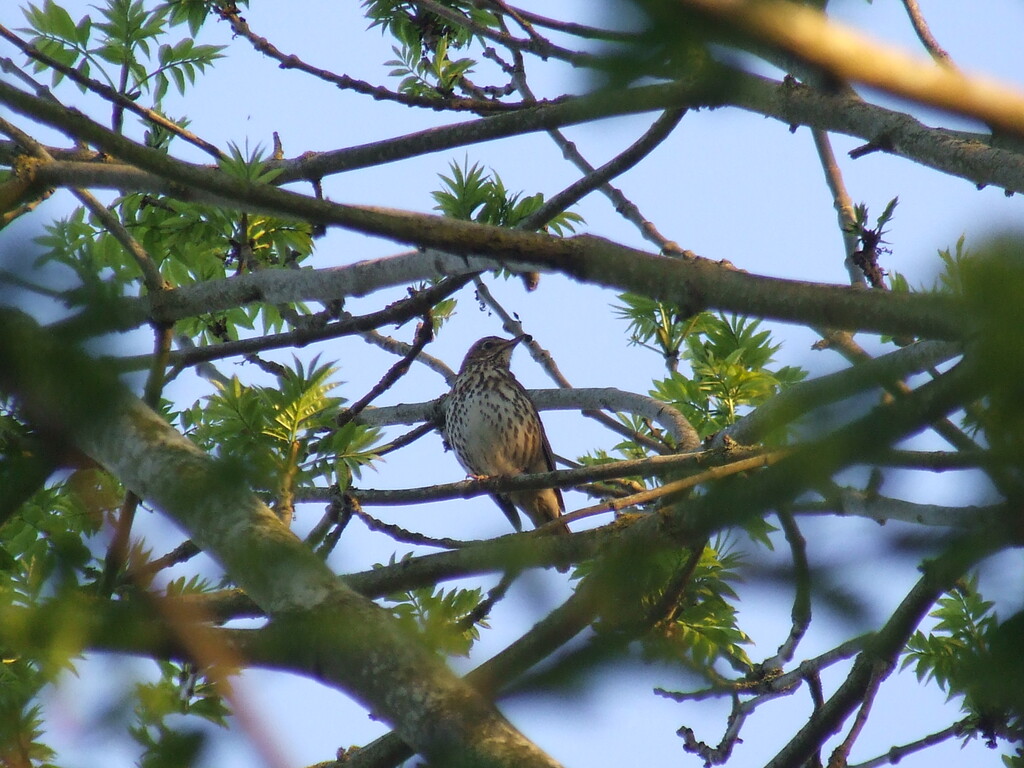
All this time we have encouraged hedgehogs, which we see most nights on our trail cameras. We have a feeder for them too.
And over the years we have heard worrying stories that house sparrows and starlings were in decline, yet in our garden they have both proliferated.
What does all this tell us?
Leaving ivy and unkempt areas, woodpiles etc, in a garden provides alternative habitats for different birds. You will get more species visiting but it takes time.
Providing a range of food and delivery methods will encourage different tree and ground feeding birds and increase diversity further.
We now have more colourful birds with more interesting songs in our garden. More pleasure for the eyes and ears!
Rewilding selected public areas will not result in untidiness but in extended habitat for interesting birds we may not see in our neatly manicured gardens.
Listen to the robin, song thrush, dunnock, blackcap and wren here. I bet you’ve heard the sweet (if a bit repetitive) song of the dunnock without realising what made it;
https://www.rspb.org.uk/birds-and-wildlife/bird-songs/what-bird-is-that/
I can also recommend a free birdsong identifying app for android and apple smartphones called BirdNET, produced by Cornell University in the USA. As long as you’ve got a WiFi or mobile connection to their servers it will identify any song you sample with your phone. It has never let me down, even identifying juvenile tawny owls on Long Hedge a few weeks ago.
Ruth and Adrian Neil
The Lambourn Environmental Group is a project operated under the auspices of the Lambourn Junction Community Interest Company.

